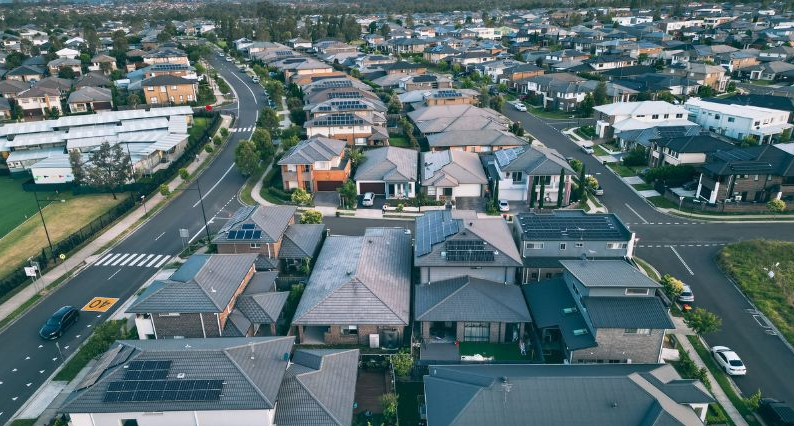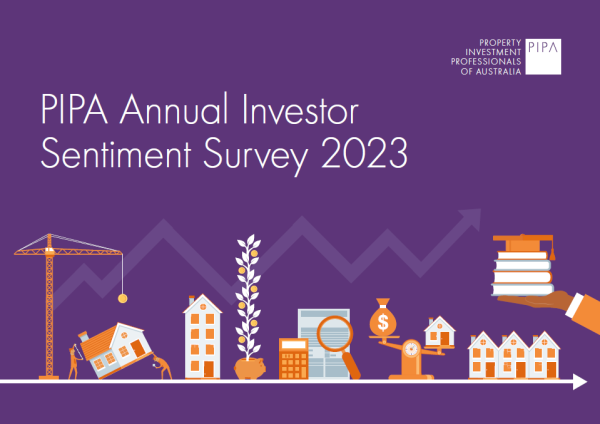From ‘game-changer’ to ‘con-job’: Bouquets and brickbats for housing measures in Labor’s budget
Oct 2022Karen Millers
Categories
Location ReportsMedia releasesNational market updatesPersonal advisersPIPA AdviserPIPA Annual Investor Sentiment SurveysPIPA Member ProfilesPIPA video updatesPIPA webinarsPodcastsProperty advisersProperty newsLatest Articles
Jordan van den Berg: The ‘Robin Hood’ TikToker taking on Australian landlords
Victorian property investors face yet another new property tax as council tests levy
Rentvesting in Australia: A deep dive
‘More chance of winning lotto’ than housing targets being met
Treasurer Jim Chalmers outlined a plan for improving affordability, which included funding for a raft of previously announced short-term supports and long-term reforms.
Given Labor’s housing-heavy election platform, there were few surprises in Tuesday’s budget – but Dr Chalmers had one big piece of news in the form of a Housing Accord.
“The ambition of this Accord is big and it’s bold – an aspiration to build one million new, well-located homes over five years from 2024,” Dr Chalmers said.
But the current challenges facing the industry in the form of supply chain issues, labour shortages, and surging costs mean the plan won’t begin for 18 months.
On top of that, Dr Chalmers conceded most of the supply of new dwellings will come from the private sector – not the government.
“But there’s a role for government, and we intend to play a leading role – by coordinating and kick-starting the investment we know needs to happen,” he said.
Big, bold, and game-changing
One of the most enthusiastic endorsements of the Housing Accord came from Everybody’s Home, the national campaign lobbying for real solutions to homelessness and affordability.
The body’s national spokesperson Kate Colvin described it as “a landmark step towards tackling Australia’s rental crisis”
“The Accord has the potential to be a game-changer for housing affordability, which has spiraled out of control with devastating consequences for so many Australians,” Ms. Colvin said.
“Bringing the states and federal government together with local government and super funds unlocks enormous potential.”
The potential for continued growth in social and affordable housing supply via partnerships between government and industry “shapes as the breakthrough Australians need to break the vicious cycle of soaring rents, high inflation, and unaffordable housing”, she said.
Max Shifman, president of the Urban Development Institute of Australia, said the government’s housing strategy had “a good chance of moving the dial further than before”.
“The plan would be impossible to achieve without the cooperation of state, territory and local governments, as so much of the vital supply boosting reforms, like streamlining planning systems, need their input and support,” Mr. Shifman said.
“Equally, without private development and investment, we simply cannot close the affordability and housing gap.”
The superannuation sector was overwhelmingly positive about the Housing Accord, with Industry Super Australia saying it “could finally unlock affordable and social housing as an asset class”.
“Investment in affordable housing is one of those issues where the financial interests of super fund members and addressing a pressing economic and social need can both be achieved,” the body’s chief executive Bernie Dean said.
Cbus boss Justin Arter said the fund had long advocated for increased investor involvement in the development of social and affordable housing.
“The Accord has the potential to supercharge this work, provide attractive returns for our members, and address the affordable housing gap.”
He described the Housing Accord as “visionary” and “a great leap forward”.
No immediate relief offered
Real Estate Institute of Australia president Hayden Groves celebrated housing being front and centre in the budget but said it lacked immediate relief for those battling worsening housing affordability.
“Constraints on housing supply, including a backlog of new builds from supply chain pressures, all mean affordability pressures for homebuyers and renters are unfortunately likely to continue,” Mr. Groves said.
“Since May, repayments on a $500,000 mortgage have increased by almost $700 each month and household saving is forecast to slump below pre-pandemic levels.
“Higher mortgage payments are expected through higher interest rates because of persistent inflation, which will impact both housing and rental affordability.”
The measures in the budget, “while both necessary and welcome, will have no immediate impact on housing and rental affordability and availability woes for many Australians”.
PropTrack economist Anne Flaherty welcomed the focus on housing supply, which was often overlooked.
“Previously, we’ve seen a lot of initiatives that support buyers, such as first-home buyers, but often a missing piece of the picture has been addressing that undersupply of housing,” Ms. Flaherty said.
“On the other hand, we have a shortage of housing now and the fact that we’re not going to start seeing those new houses created until after 2024 indicates that we’re still going to face issues over the short- and medium-term.”
Emma Greenhalgh, chief executive of National Shelter, the peak body representing low-income households, said almost one million Aussies are experiencing housing stress right now.
“It is heartening to see leadership from the Federal Government to bring together key funding and delivery partners to solve the housing crisis that has gone on for too long in Australia,” Ms. Greenhalgh said.
“However, the government must ensure that the one million homes that will be delivered will help those on the lowest incomes and those experiencing housing difficulties.”
More detail required
Proper targets that hold states and territories accountable and address the key barriers regarding land releases, planning efficiency, and incentivised private market activity, are necessary, Mr. Groves said.
“Done right, this can give Australia’s housing stock the generational injection it so badly needs in the same way policy programs in the 1970s did.
“Of course, the devil will be in the detail, and much more detail will be needed – especially in relation to the intent to provide opportunities to superannuation funds and build-to-rent developers ahead of Australia’s mum-and-dad investors.”
Adam Crowley, national leader of property and construction at professional services firm RSM Australia, said seeing collaboration between all levels of government and private industry is “a welcome change”.
“A multi-pronged approach is needed to release more land for development in well-located areas and encourage greater private investment, particularly from our well-capitalised superannuation institutions, in the sector,” Mr. Crowley said.
But while the Housing Accord’s target of one million new homes is “headline-grabbing”, he agreed, “the devil will be in the detail”.
Property Council of Australia boss Ken Morrison said the new Housing Accord demonstrates “bold ambition”, but significant action is now required to make it a reality.
“Achieving the Government’s target will require more tangible actions than have been announced [in the budget], and we look forward to working with the government on practical steps to boost supply,” Mr. Morrison said.
He welcomed efforts to remove the barriers to institutional investment in housing, including the booming build-to-rent sector, via a review by the government’s soon-to-be-established Housing Supply and Affordability Council.
“If we are serious about providing greater housing choice and affordable options, it’s important we have fair tax settings that encourage investment in all types of housing.
“Right now, current tax settings around build-to-rent housing are a barrier to investment, and a leveling of the playing field will bring more rental stock online, as noted by the Productivity Commission last month.”
Build-to-rent has the potential to deliver an enormous pipeline of dwellings that offer long-term and secure dwellings, he said.
Tricky spin hides the truth
The headline-grabbing target of one million new homes in five years is “to be applauded”, said Nicola McDougall, chair of the Property Investment Professionals of Australia.
“It must be noted that the Federal Government’s plan only includes its own commitment to actually construct 40,000 social and affordable houses across the nation – a drop in the ocean compared to what is needed,” Ms. McDougall said.
The other 960,000 dwellings are at this stage merely a goal, with the Housing Accord hoping collaboration will prompt their construction.
Max Chandler-Mather, the Greens spokesman for housing and homelessness, described the government’s promise of one million new homes as “a total con job”.
“Over the last five years, the private sector built just under one million homes, so Labor announcing that under their plans the private sector will build one million homes over five years from 2024 is a complete joke,” Mr. Chandler-Mather said.
“These homes would have been built anyway. The ‘Housing Accord’ looks like a complete con job.”
Angus Taylor, the Coalition’s treasury spokesman, said the budget did “nothing to assist family budgets”.
“There is no credible plan to deal with the source of inflation or to help families deal with immediate cost of living pressures,” Mr Taylor said.
“Instead, there is an aspirational promise to build one million homes – starting in 2024.
“This budget fails Australian families at a time when they really need a plan to address cost of living pressures.”
Housing Accord must act swiftly
The new Housing Accord has the potential to meaningfully address the housing supply issue that’s underpinned affordability woes for decades, according to Master Builders.
But with forecasts that new building starts will decline over coming years, swift action is needed, the group’s chief executive Denita Wawn said.
“Over the next three years, Master Builders Australia forecasts that new home building starts will fall significantly short of 200,000 per year, the volume of output that will be needed to meet demand,” Ms. Wawn said.
“Our forecasts indicate this threshold will not be exceeded until 2026.”
The Housing Accord should address the obstacles faced by the building and construction industry that slow the supply of new homes, she added.
“This includes lengthy delays in approvals for land title, development and building applications, occupation certificates, shortage of land in the right places, high developer charges, and inflexible planning laws.”
It’s vital that any plan to improve the supply of rental supply includes all stakeholders – including private ‘mum and dad’ investors, who provide the majority of dwellings, Ms. McDougall said.
“That’s because 16.7% have sold at least one dwelling in the past two years, which potentially depleted the supply of rental stock nationally by nearly 270,000 or 10%.”
PIPA’s latest sentiment survey found that 19% of real estate investors are considering selling, which would equate to another 200,000 rental properties disappearing.
“Tellingly, three of the top four reasons why investors may sell their property over the year ahead is because they feel that they have lost control of their assets.”
The missed opportunities
Stamp duty remains one of the biggest barriers faced by young Australians trying to get into their own home, adding tens of thousands of dollars to upfront costs.
While New South Wales has begun a transition towards a fairer land tax model, change will be slow – and broad reform won’t happen without Commonwealth support, experts say.
Mr. Groves said the new Housing Accord should include plans to scrap stamp duty, which doesn’t just impact first-home buyers, but also makes downsizing unattractive and thus reduces housing supply.
“It is an opportunity lost to once and for all deal with the wicked problem of stamp duty, which has been entirely and disappointingly omitted within the National Accord,” he said.
Ms. Greenhalgh said the most vulnerable in the community, who are battling rising rents and worsening cost-of-living pressures, have missed out.
Finding an affordable home is harder than ever and the budget offered no assistance, she said.
“Being able to secure housing that people can afford is vital to maintaining the health and well-being of individuals and communities.
“It is disappointing therefore that there has been no review or increase to Commonwealth Rent Assistance or income support payments when we know housing is unaffordable right now.
“Addressing housing supply is a critical part of the equation but providing lower-income households more money in their pockets so that they can afford to pay rent will make a considerable difference to their housing opportunities, and ultimately their health and wellbeing.”
Originally Published: Shannon Molloy | Realestate.com.au | 26 October 2022




